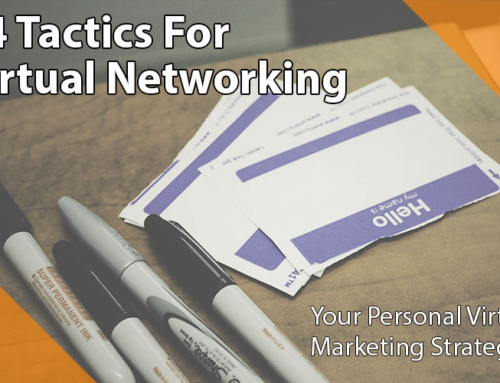*Note: This article was originally published on LinkedIn, in response to…well, in a fit of frustration. While some of the content is specific to the platform, the concepts apply anytime you’re pitching sales prospects. It certainly resonated with a number of people—just check out the comments on the original post.
You had me, for a minute there. When you sent me an invitation, saying we have things in common and you’d love to connect, I took you at face value and accepted the invite. Within 24 hours, you followed up with a message telling me you could help me generate leads and grow my revenue exponentially and here’s your 10-page guide to consulting excellence and when can we talk?…and you lost me.
I appreciate that it takes tenacity and courage to cold-call sales prospects. I respect that you are trying to grow your own business by leveraging the world’s most popular professional platform. However. You will never get my business by pitching me out of the blue, whether on social media or by email—and I’m certain I speak for at least a few other professionals. So, may I humbly offer advice on how to create meaningful connections that are much more likely to land you business from LinkedIn (and elsewhere).
1. Do Your Homework
Here’s one of the greatest values of LinkedIn and the world wide web in general, in terms of finding viable prospects: you get to learn about others’ experience and interests before you ever make contact. If you take a little time to explore my posts and recent activity on LinkedIn, for instance, you’ll see that I volunteer with Social Enterprise Greenhouse and Venture Cafe, because I’m into helping entrepreneurs and social impact businesses. You might notice that I love sharing tips and resources on marketing content and strategy, and that I list recent client projects in my profile. Maybe you’ll catch on that I ride motorcycles.
So much information! This is free, unfettered market research that you can collect and use to connect with others. Ask yourself what they might need help with, or what they’re keen to learn more about. Then offer insights and resources that are uniquely tailored to a specific need or concern your prospect is facing. Speaking to what people care about most is the best, and maybe the only, way to get their attention.
2. Share Real Value
Let’s remember that I don’t know you at all. When you contact me out of the blue, I have no idea if you’re knowledgeable, credible, or even a nice person. So when you ask for my business before sharing anything of value with me first, it’s not only annoying, it also makes me question whether you’re any good at your work.
Try this instead: when you reach out to potential sales prospects, share an article or resource that you think they’d find useful, based on what you’ve seen in their profile or feed. You could do this when you first connect, or shortly after they accept your invitation. This demonstrates that you’re paying attention to their professional interests and—even better—you’re genuinely interested in helping them.
Over time, as you post interesting things in your feed or share resources with others, they’ll get a better sense of who you are and what you’re skilled at. Combine that with occasionally engaging with other people’s posts, everything from a simple like to an insightful comment. Find creative ways to contribute to the LinkedIn community, and you’ll stand out as a credible expert and a go-to resource.
3. Be Honest
Few things are more annoying than the ol’ bait-and-switch. The minute you come across as insincere, you’re done. Here are a few examples of notes I received with invitations to connect:
“I checked out your profile and I think you would be an excellent addition to my professional network, please accept this invitation to connect.”
“I was impressed with your profile and felt it could be valuable to connect and explore some opportunities. Would it be ok if we connected?”
“It looks like you do some impressive work with RESON8 Marketing and I was compelled to reach out here on Linkedin to connect – If you are open to that, please accept.”
They sound innocuous enough, but I’ve learned that this is the opening gambit for people who are just waiting to send me a sales pitch. Unfortunately, when I see these types of messages coming from people whose headlines have words like “helping consultants book sales calls” or “helping professionals grow their client base,” I tend to ignore them.
Be upfront about your intentions when you ask to connect. Your prospects may say no to the sales pitch, but they might still accept your invitation if you seem interested in making a genuine connection. That gives you a chance to continue earning their trust and respect, especially if you follow steps 1 and 2 above.
And guess what? By making a genuine connection with others, you’re giving them a chance to help you out, too. LinkedIn is about building credibility and trust by providing value to other professionals—including referrals. So invest a little time and effort in making real connections, and it will pay off in spades down the road.






